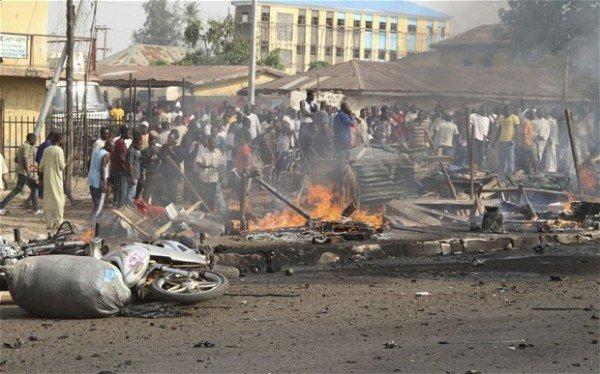One of the world’s big three credit rating agencies, Fitch Ratings, has said that the decision by the Central Bank of Nigeria (CBN) to raise its benchmark interest rate for the first time in almost six years, by 150 basis points to 13 per cent, is not a signal for a fundamental shift in the apex bank’s unconventional approach, which, according to the agency, “will continue to impede efforts to rein in inflation.”
The CBN’s Monetary Policy Committee (MPC), at its meeting in May, had increased the benchmark interest rate, that is, Monetary Policy Rate (MPR) from 11.5 per cent to 13 per cent, citing inflationary pressures in the country and across the globe.
However, in a report published on Thursday, the global rating firm analysts said that despite the rate hike, it believes that: “Nigeria’s complex policy approach will be maintained at least until the next presidential election in February 2023.”
The agency said that the Russia-Ukraine war’s impact on global prices, notably for food and energy, has seen inflation accelerate in 2022, adding that it now forecasts Nigeria’s inflation to average17percent in 2022, compared with the 14.6per cent it predicted in March this year.
It noted that while the Nigerian government had planned to phase out fuel subsidies in 2022, they are now unlikely to be removed before 2023.
According to the agency, although the authorities’ decision to delay the subsidy removal is helping to contain inflation this year, the cost of the subsidy borne by the Nigerian National Petroleum Corporation (NNPC), has reduced NNPC transfers to government. “As a result, we forecast the general government deficit to narrow only moderately to 3.4per cent of GDP this year, from 4.2 percent in 2021″, Fitch stated.
The report partly read: “Fitch had expected at least one interest-rate hike in 2022, but the 150bp increase in the main policy rate, to 13%, on 24 May was larger than we had anticipated.
“Further increases are possible, as officials with the Central Bank of Nigeria (CBN) have indicated a preference for real interest rates to be less steeply negative. Moreover, we believe the CBN will use the Cash Reserve Ratio and the issuance of CBN special bills to tighten liquidity.
“The CBN is using these discretionary measures to inject or withdraw liquidity from the financial system, as well as influencing borrowing costs for specific sectors through various loan guarantees and direct support facilities. This has made monetary policy difficult to gauge and created a segmented interestrate environment, impeding thetransmissionof monetary policy.
“The CBN adopted the Investor and Exporter (IEFX) window as the official exchange rate in May 2021. However, it continues to use administrative controls to manage the demand for foreign exchange, which has caused economically damaging shortages.
“The central bank’s inflation fighting efforts have been complicated further by its lending to the federal government. IMF figures show that the CBN’s net claims on the central government rose by roughly 23% yoy in January 2022. CBN officials have suggested that raising policy interest rates could moderate government domestic borrowing.
“However, the interbank treasury bills true yield remains low, at 3.9% for three month bills at end-May, albeit up from 3.3% at end-April.
“Persistently high inflation is a key macroeconomic weakness, contributing to Nigeria’s relatively modest growth rates and weighing on external liquidity by discouraging financial account inflows.”
The credit rating agency said it now forecasts Nigeria’s growth at 3.1% in 2022, predicting that high oil prices will lift oil receipts and that a post-pandemic recovery in activity will support non-oil sector growth.
It, however, stated that Nigeria’s high inflation this year will dampen growth by eroding consumer and business purchasing power, adding that: “The oil sector’s inability to raise production will provide a further obstacle to higher growth. Oil production slipped to 1.26 million barrels per day (bpd) in May 2022, from an average of 1.38 million bpd in 1Q22.”




